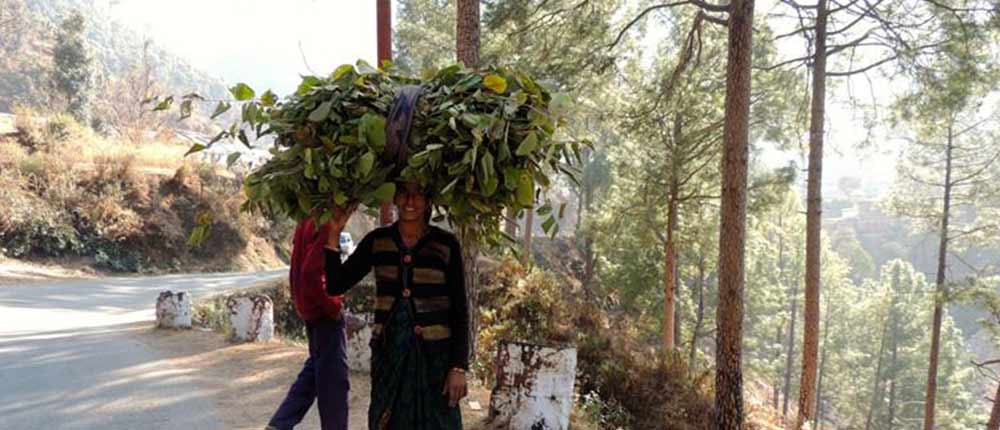The study examines the value of Uttarakhand's forests to local communities and to tourists

Forest degradation is widespread in India with severe consequences for millions of forest-dependent communities. Vegetal degradation has been pegged as the second leading cause of land degradation in India, accounting for 8.91% of the total geographical area (TGA) in 2011-13 according to one source (SAC, 2016) or as much as 10.4 % of the TGA if open forests and scrub forests are considered (FSI, 2015, see Chapter 4, Volume I of this report). Forest loss and degradation deprive people of innumerable goods and services such as hydrological services, carbon sequestration and storage, pollination services for agriculture, recreation and tourism values or basic provisioning services. Consequently, their degradation places a huge burden on the exchequer although failure to capture their full market value, underestimates this loss. In the country study, we estimate that forest degradation accounts for 55% of the total costs of land degradation in India amounting to Rs 1441 billion to 1758.6 billion or 1.41% of the GDP and 8.81% of the gross value added from forestry and agriculture1. Here the study attempts to determine the value of forests in the Dhanaulti and Devalsari area of Tehri Garhwal, Uttarakahand to local communities and to tourists and what their degradation implies in terms of lost revenues from recreation or foregone provisioning services from fuelwood, fodder and Non-Timber Forest Products (NTFPs). In addition, using a mix of primary and secondary data and remote sensing assessments, the study determines the costs of forest degradation in Dhanulti and Devalsari from 2001-2015 and project this further to 2030. It then determines the costs of reclaiming these forests in 2030.
Uttarakhand is a treasure trove of forest wealth and biodiversity, apart from a rich heritage of cultural diversity, traditions and community management practices that are closely linked to the state's considerable forest reserves. These forests provide important provisioning services like firewood, fodder, timber, medicinal plants and other non-timber forest products (NTFPs). But the forest ecosystems of Uttarakhand also provide several intangible services, which help to sustain life, including several regulating services like climate moderation, hydrological regulation, seed dispersal, and pollination, supporting services such as nutrient cycling as well as cultural, recreational and aesthetic services (LEAD India, 2007). Consequently, a large proportion of the population of the state relies on forests and biodiversity, either directly for subsistence or livelihood needs or indirectly through various industries including tourism.
Forests account for 46.73% of the state's geographical area (FSI, 2015). Although forest cover had stabilized from 2001 to 2013, the latest figures indicate a dip in forest cover by 268 km2 (FSI 2015). Forest degradation also continues to be a problem for the state given the enormous dependence on the forests for fuelwood, fodder and other NTFPs. This is evident from the decrease in dense forests in 10 districts, i.e. almost 77% of the districts. Moreover, the overall decrease in dense forests for the state is a matter of concern.
1. At 2014/2015 prices. See Chapter 4 in Volume I where the costs have been estimated.
